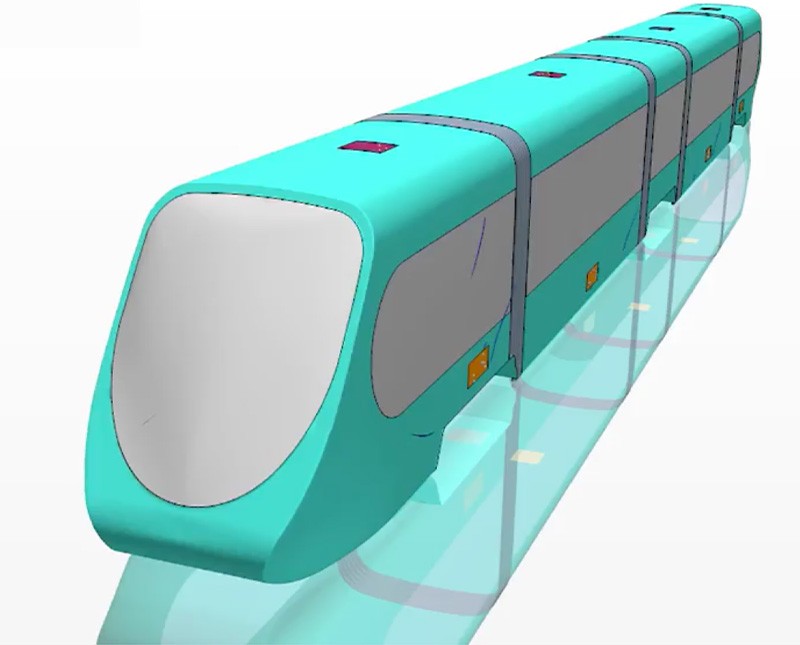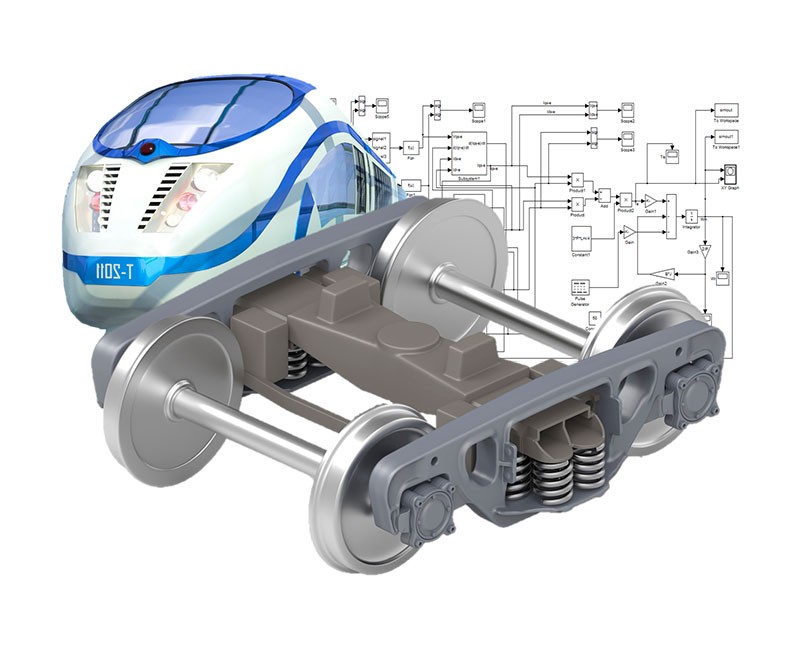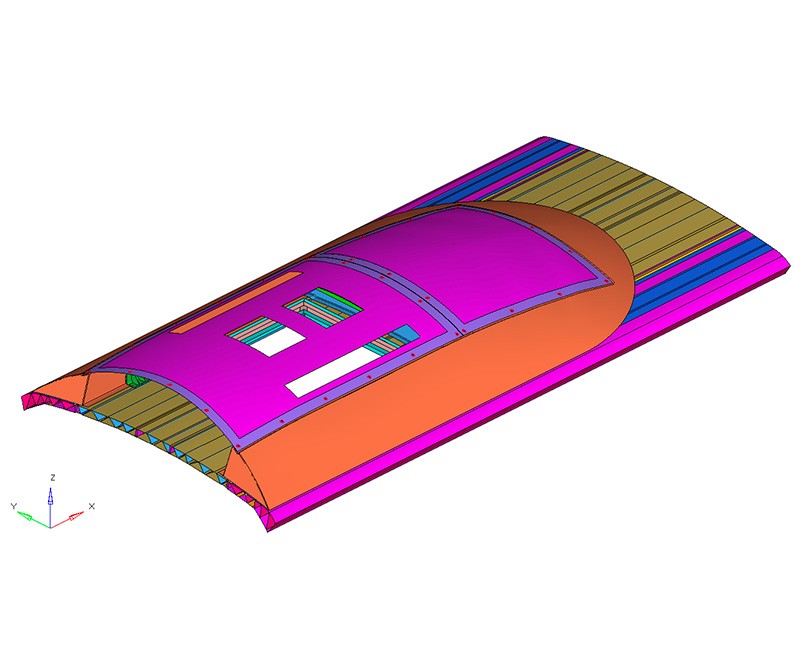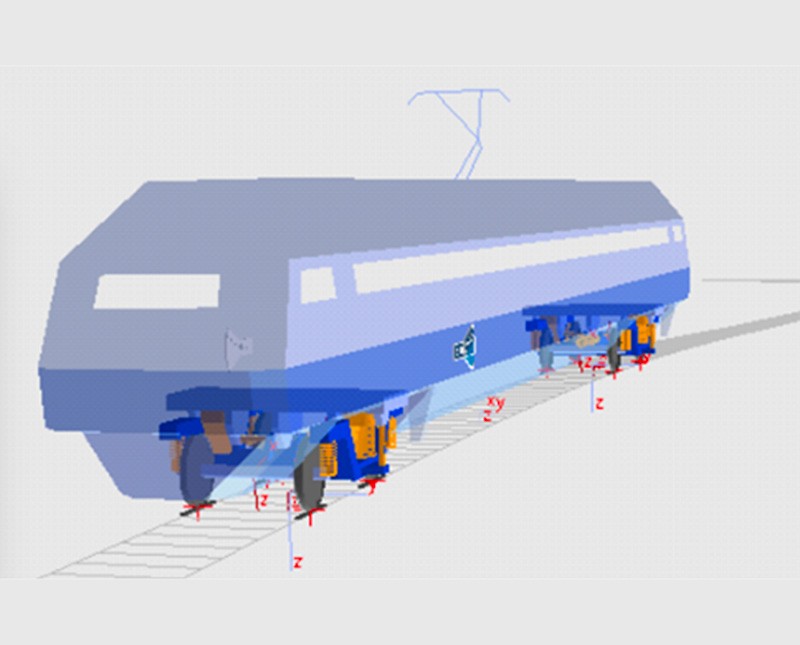Main target
The railway vehicle homologation process requires to perform tests on track for the vehicle with measurement equipment, in order to evaluate the dynamic quantities useful for the bogie attitude evaluation, in order to assess the vehicle dynamic behavior. The homologation process and data analysis procedures are defined by UNI EN14363 standard, which also contains indications for the validation of simulation models. AMET developed for an industry customer a set of tools for the analysis of test (or simulation) data, according to regulatory requirements.
Data analysis tools: overview
Running Dynamics: forces measurements
One-dimensional analysis of Ripage forces (sum of bogie lateral forces, mean and maximum values): requires a histogram representation, aligned with the speed profile and the non-compensated acceleration pattern.
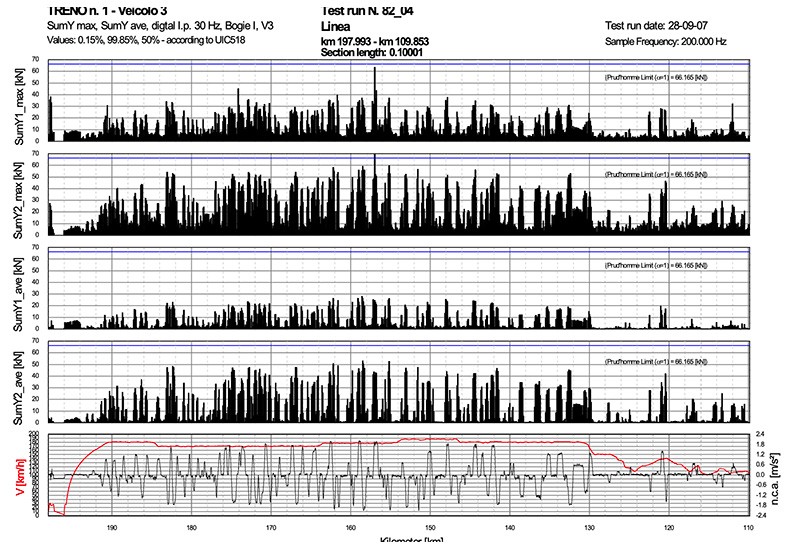
Dynamic quantities Time History
This tool allows to display and monitor in real time the time history of the quantities detected by the measuring instrumentation during the test run.
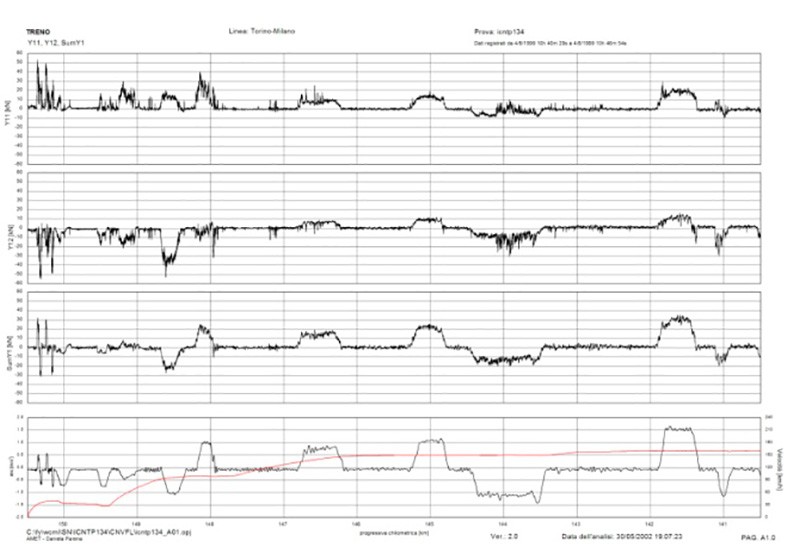
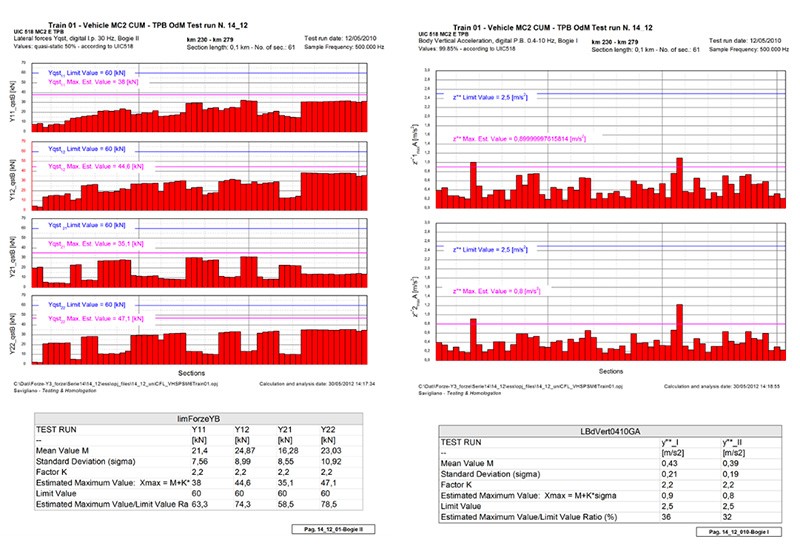
Running behavior evaluation, according to standard requirements
One-dimensional analysis of vertical loads, Y/Q ratio and vertical and lateral acceleration on bogie. This tool allows to calculate automatically the maximum values and to compare them with the limit values.
Comfort indexes
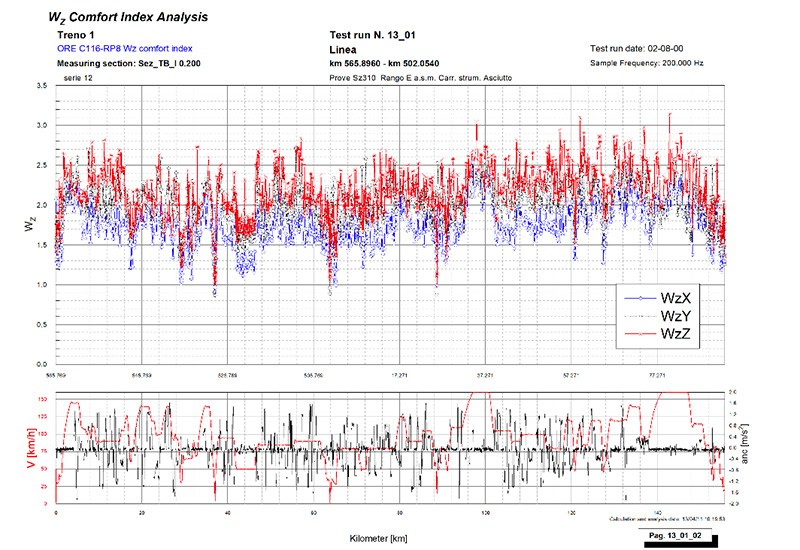
Passenger Comfort: Wz index
This tool allows to plot the running quality index values Wz or Sperling index (according to ORE C166/RP8 standard): the basic assumption is that, for sinusoidal vibrations of a certain amplitude and frequency, the human body is sensitive to the tenth root of the product of the inertia force work and the derivative of acceleration with respect to time (jerk). Wz index is measured in the three directions x, y, z and ranges from 1 (optimal comfort) to 5 (dangerous situation).
Passenger Comfort: NMV and PCT indexes
NMV index (UNI EN 12299 standard) is a function of the accelerations in the 3 directions and evaluates the average comfort according to the standard method.
PCT index is calculated for seated and standing passengers and evaluates comfort on curve transitions (UNI EN 12299 standard). PCT index is a function of the lateral acceleration and of the jerk of rolling speed.
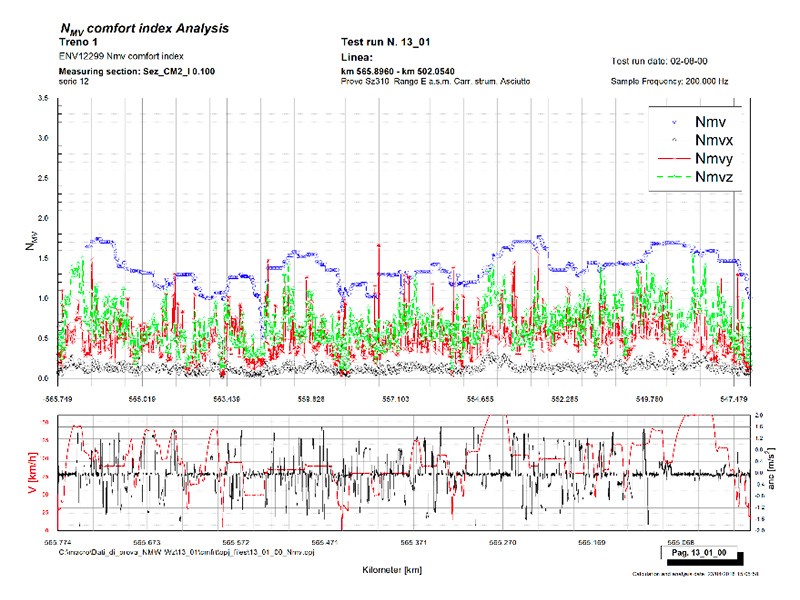
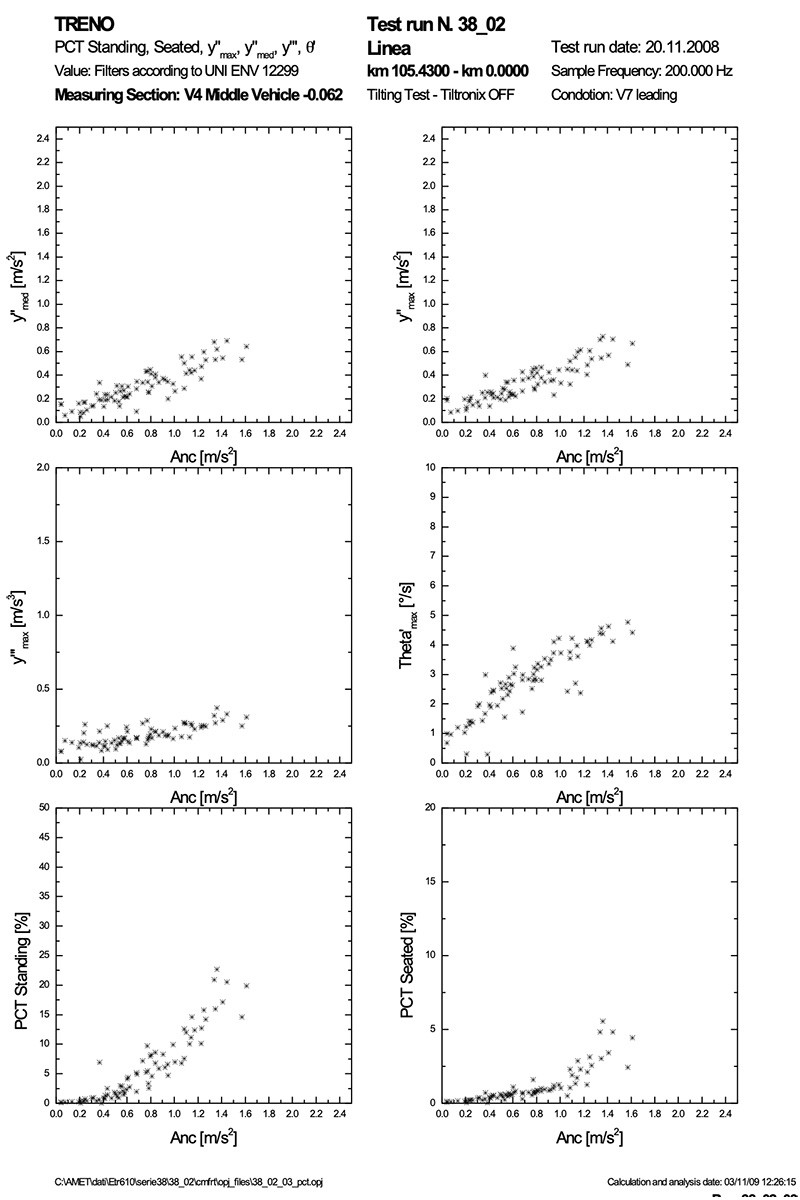
Benefits
The availability of a tool that allows you to quickly analyze (in some cases in real time) the measured data, in order to evaluate the dynamic behavior and the running quality of the vehicle, mainly ensures the possibility to optimize online tests and sometimes to reduce the number of test cases, consequently reducing time and costs of testing.



